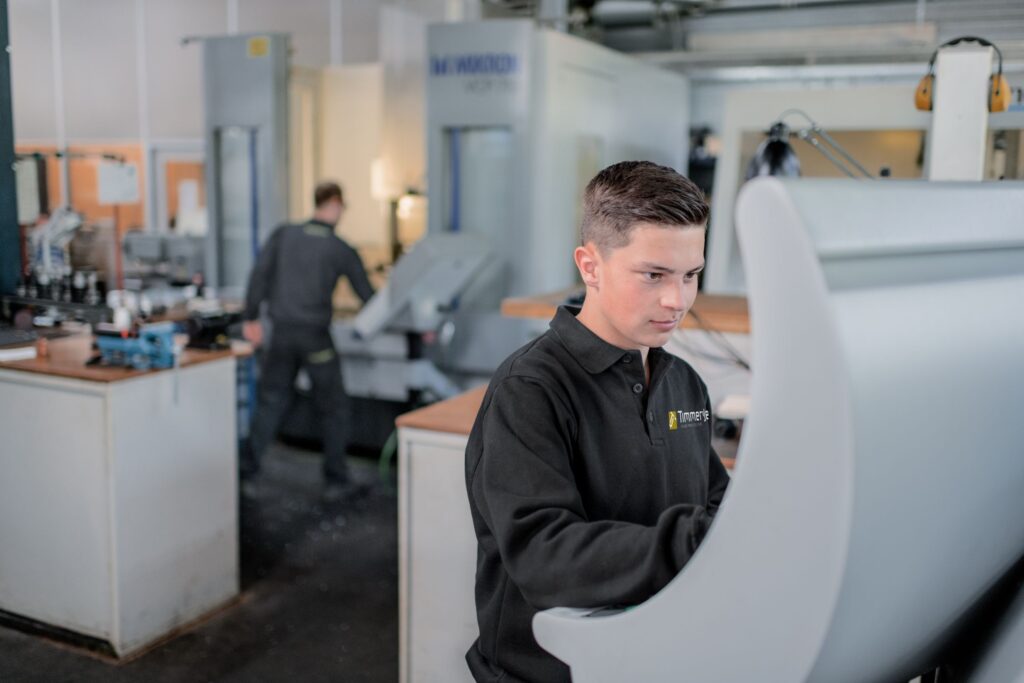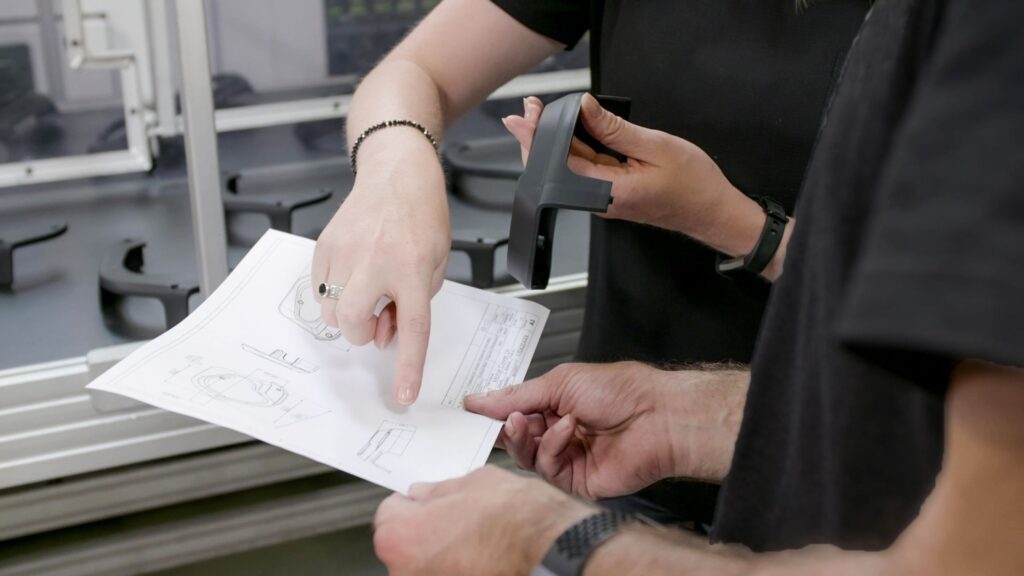
Planned solution
Planning for a future-proof solution:
Our project-based approach helps you make the right decisions and oversee the desired time-to-market. We put together a product development plan for you consisting of nine different phases. We deliver each phase with an agreed outcome based on which you can make a decision for moving forward.
- Defining the programme of requirements.
- Concept formation
- Analysis
- Prototyping
- Engineering (design detailing)
- Mould and automation
- Production
- Finishing and Assembly
- Logistics
Fase 1

Defining the programme of requirements
To define the development, we believe it is important to draw up a programme of requirements (PoR) that your product will have to meet. With our knowledge and experience of similar plastic injection moulding products and developments, we will help you draw up the complete requirements package. In drawing up this package, we assume that you will have provided us with the necessary information. Final result: a definitive PoR.
Concept formation
The concept will focus on integrating functions and production feasibility as a plastic injection-moulded product. In this phase, we deliver one or more concepts with supporting reasons, tested against the PoR. We back this up with design sketches.
Fase 2

Fase 3

Analysis
We think it is important to analyse the risks and discuss them with you. We check whether the choice of materials is suitable for the stated requirements. To minimise risks, we work with the potential failure mode and effects analysis (FMEA) method. Using this method, we systematically investigate what potential problems may arise with the process or with the plastic injection moulded product in the future.
Prototyping
In the prototyping phase, we have one or more prototypes of the plastic injection-moulded product made. The model is intended to give an impression of the main dimensions, fit and detailing in the product. Using the latest, laser-controlled techniques, we can produce prototypes very quickly without already having the mould. This is because a physical, three-dimensional assessment is often necessary. For example, to check the fit with any other product parts, to assess physical proportions and the like, or for other testing purposes.
We have a whole range of options, ranging from a simple mock-up to a full-function product. We usually take a “parallel actions” approach, overlapping different prototyping capabilities. This gives you optimum transparency, but also ensures a speedy prototyping process.
Fase 4

Fase 5

Engineering (design detailing)
Detailing the plastic injection moulded product is the important stage before proceeding to mould construction and automation. We can perform this phase, or it can be done for you by your own engineering department.
- Working out the chosen concept in the design (ridges, wall thickness, discharge, etc.)
- Establishing discharges, dimensions, tolerances, etc.
- 3D CAD model, shape suitable for mould and tool creation
- 2D product drawings incl. dimensions to be measured for final production, with tuning agreements to achieve accurate dimensions.
- Mould flow and FEM analyse
Mould and automation
Based on the final 2D and 3D CAD drawings of the future plastic injection-moulded product that you have approved, we will start on the development and production of the mould. For this we have our own tool-making shop and we work with an extensive international network of mould makers to ensure the right price/quality ratio and spreading of risks. The moulds are built in accordance with our standards and specifications. We set up a transparent timetable so you can monitor the process and time the desired product launch. The required automation and related production tools will proceed in parallel with mould construction.
Fase 6

Fase 7

Production
Before we go into series production with your plastic injection-moulded product, the product and the required process will first have to be approved. For this we follow the PPAP (Production Part Approval Process) procedure and supply the associated documentation. The PPAP record provides proof that we understands and meet your customer-specific requirements. This, together with a product sample, will be summarised for you on a Part Submission Warrant form.
Finishing and Assembly
This continued production of your plastic injection-moulded product requires corresponding steps to validate the process. We will also approve this process before going into series production. For this we also apply the PPAP (Production Part Approval Process) procedure and supply the associated documentation. This, together with a product sample, will be summarised for you on a Part Submission Warrant form.
Fase 8

Fase 9

Logistics
We develop on a customer-specific basis and that includes customer-specific delivery. To do so, we have a range of transport packaging, storage and ordering methods at our disposal.
To deliver your plastic injection-moulded products just-in-time, we make customer-specific commitments. The timing for ordering and delivering the plastic injection-moulded products in line with the agreements made requires communication. To this end, we have an experienced in-house sales and shipping team for daily coordination. The in-house sales department is part of the Supply Chain, keeping the lines of communication short and responding appropriately. Our ICT department is responsible for implementing your automation needs.